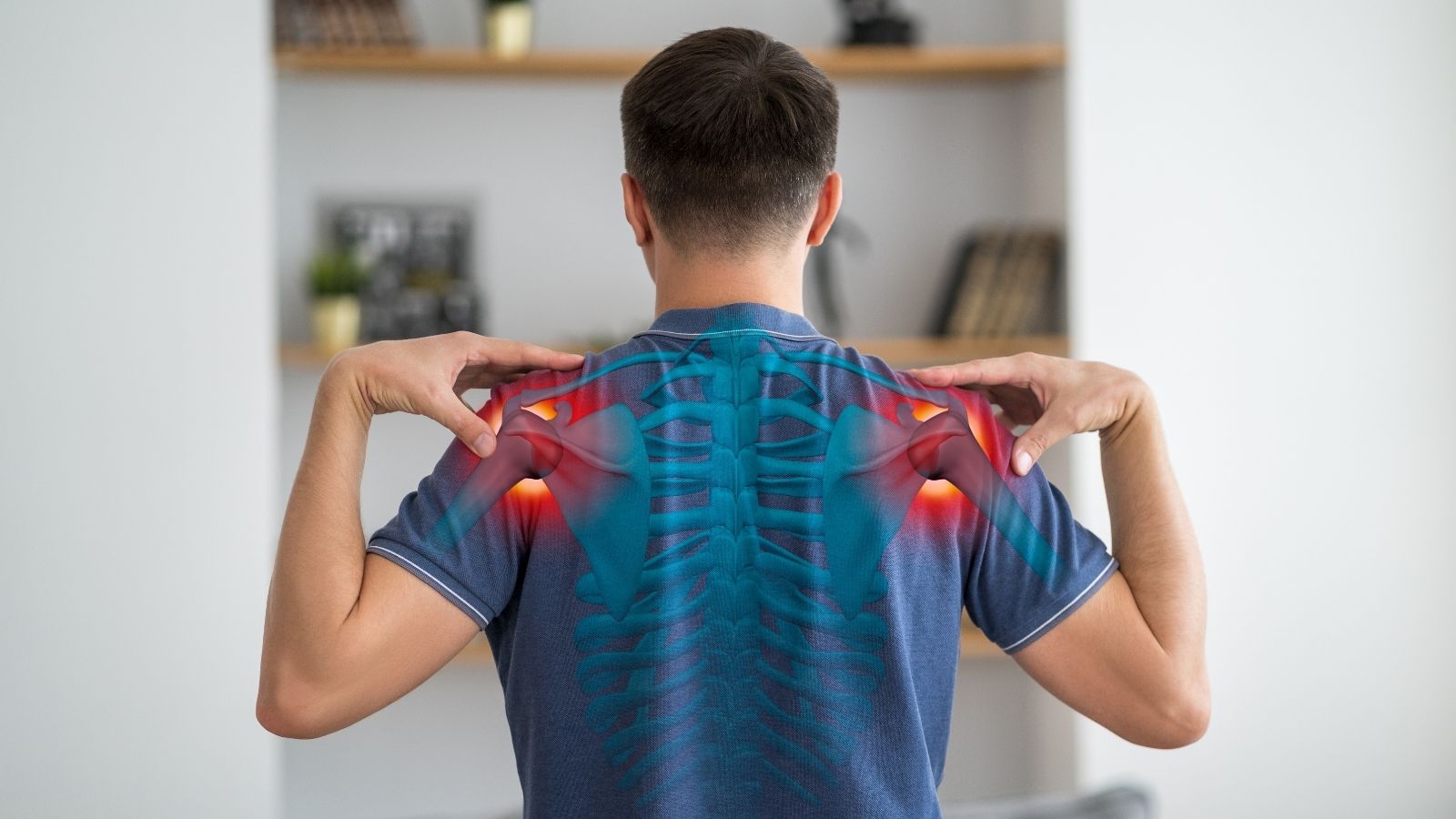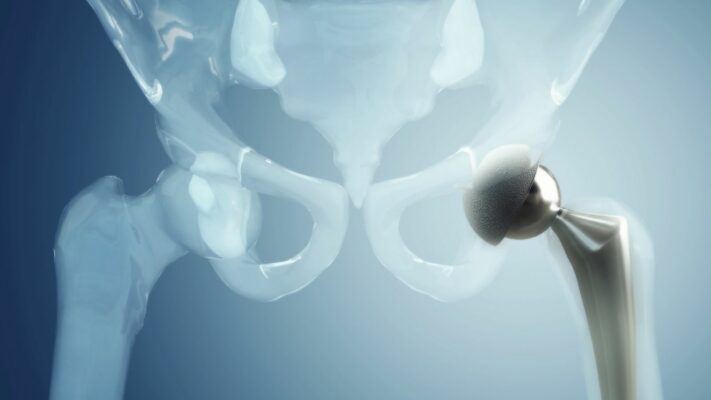Prof. Dr. Murat Demirel, one of the best orthopedic doctors specializing in frozen shoulder treatment in Ankara, has many years of experience in diagnosing and treating this condition, which causes restriction of shoulder joint movements and severe pain. Frozen shoulder (adhesive capsulitis) usually occurs due to inflammation and stiffening of the capsule surrounding the shoulder joint, and if left untreated, it can significantly reduce quality of life. Among the hospitals providing frozen shoulder treatment in Ankara, Prof. Dr. Demirel offers his patients personalized treatment plans with modern physical therapy applications, injection methods, and surgical interventions when necessary.
During the treatment process, he applies gradual and safe methods to reduce his patients’ pain and help them regain shoulder mobility. By following the doctor’s advice after frozen shoulder treatment, the recovery process becomes permanent and effective. In addition, by providing transparent information about frozen shoulder treatment prices in Ankara, he helps his patients make informed decisions. You can also schedule an appointment right away to protect your shoulder health and regain your freedom of movement.
| Disease Name | Frozen Shoulder Syndrome (Adhesive Capsulitis) |
| Affected Area | Shoulder joint capsule |
| Symptoms | Shoulder pain, restricted movement (especially external rotation and abduction), night pain |
| Diagnostic Methods | Clinical examination, MRI (capsule thickening and synovitis), X-ray (to rule out other causes) |
| Causes | Exact cause is unknown; may be associated with trauma, post-surgery, prolonged immobilization, systemic diseases such as diabetes |
| Risk Factors | Ages 40–60, female gender, diabetes, thyroid disorders, history of shoulder surgery |
| Treatment Methods | Conservative: NSAIDs, physical therapy, intra-articular steroid injections; resistant cases may require manipulation or arthroscopic release |
| Surgical Options | Capsular release with shoulder arthroscopy (rarely) |
| Complications | Permanent movement restriction, persistent pain, shoulder muscle weakness |
| Recovery Process | May vary between 6 months and 2 years; home exercises and physical therapy are important |
| Prevention Methods | Exercises to preserve shoulder mobility, encouraging early movement |
| Follow-up Process | Physical therapy process and regular evaluation of mobility |
Yazı İçeriği
What is Frozen Shoulder Syndrome and Why Does It Occur?
Our shoulder joint is the most mobile joint in our body. This wide range of motion is owed to a flexible and loose structure that surrounds it like a balloon. We call this structure the “joint capsule.” In a healthy shoulder, this capsule allows the arm to rotate, reach, and lift freely in all directions.
In frozen shoulder syndrome, however, something goes wrong within this capsule. The process is usually triggered by inflammation (inflammation) starting in the inner lining of the capsule. The body’s response to this inflammation is a kind of “over-enthusiastic” wound-healing process. Fibroblast cells, the repair team of the body, rush to the area and begin producing large amounts of collagen. Normally this is a good thing, but in frozen shoulder, this process goes out of control. The newly produced and irregular collagen fibers cause thickening and stiffening (fibrosis) of the capsule tissue.
Over time, the once elastic and wide capsule surrounding the shoulder joint shrinks, thickens, and becomes sticky, like a wool sweater that has shrunk after being washed at high heat. This sticky and stiff condition of the capsule prevents the shoulder bones from sliding smoothly over each other and severely restricts shoulder movements. The term “frozen” comes from this; the joint is mechanically locked. This is not muscle weakness or a nerve problem but rather the capsule physically stiffening and contracting.
What Causes Frozen Shoulder Syndrome?
The reason for this syndrome does not always have a clear explanation. For this reason, frozen shoulder is classified into two main categories.
Primary Frozen Shoulder: In this case, there is no specific event or cause that triggers the onset of the syndrome. Even without any shoulder injury or known trigger, the condition develops spontaneously (idiopathically). It is thought that underlying systemic predispositions play a more significant role in this type.
Secondary Frozen Shoulder: In this type, there is an event or an underlying health issue that triggers the condition. Any situation that causes the shoulder to remain immobile for a long time can be a risk factor for secondary frozen shoulder. The main causes are as follows:
- Previous shoulder surgery (such as rotator cuff repair)
- A fracture in the arm or shoulder area
- Other shoulder problems such as rotator cuff tears or tendinitis
- Paralysis or stroke resulting in immobility of the arm
- Major surgeries outside the shoulder, such as heart surgery or brain surgery
- Prolonged use of a sling
In these cases, due to pain or recovery processes, the person avoids moving the shoulder. This immobility creates a suitable ground for the capsule to gradually stiffen and contract, initiating the frozen shoulder cycle.
Who is at Risk for Frozen Shoulder Syndrome?
Although frozen shoulder syndrome can occur in anyone, certain factors significantly increase the likelihood of developing this condition. If you fall into one of the following groups, you may need to pay more attention to your shoulder health.
General risk factors include:
Age: Most commonly seen in individuals between the ages of 40 and 60.
Gender: It is slightly more common in women than in men.
Immobility: Prolonged shoulder immobility for any reason is one of the most important risks.
Genetic Predisposition: Having a family history of frozen shoulder may slightly increase the risk.
Certain health problems create a much stronger basis for frozen shoulder development. These systemic diseases include:
- Diabetes Mellitus
- Hypothyroidism (underactive thyroid gland)
- Hyperthyroidism (overactive thyroid gland)
- Parkinson’s Disease
- Cardiovascular diseases
- Certain autoimmune disorders
In this list, diabetes stands out in particular. The incidence of frozen shoulder in individuals with diabetes can be up to 5 times higher than in those without. The reason for this is that long-term high blood sugar damages the structure of proteins in the body. This process causes sugar to attach to the collagen fibers forming the joint capsule. These “glycated” fibers lose their elasticity, becoming stiffer and more brittle. This makes the capsule more prone to stiffening and contracting. Moreover, in diabetic patients, frozen shoulder tends to progress more severely and be more resistant to treatment.
What Are the Symptoms and Stages of Frozen Shoulder Syndrome?
Frozen shoulder is not a condition that appears suddenly; it usually progresses slowly and insidiously over months. This process is typically divided into three distinct stages. Each stage has its own symptoms, and their duration may vary from person to person.
Stage 1: Freezing (Painful) Stage
This initial stage usually lasts between 2 to 9 months, and as the name suggests, its most prominent feature is pain. Initially, the pain is mild and aching, but over time it becomes sharper and more severe. It is triggered by movement but, as it progresses, can also be felt at rest. The typical symptoms of this stage are:
- A dull, deep pain felt on the outside of the shoulder and upper arm
- Pain that increases at night and wakes the patient from sleep
- Sudden sharp pain with movements such as lifting or rotating the arm
- Gradual restriction of shoulder movements
- At this stage, patients often consult a doctor due to pain, although movement restriction may not yet be fully established.
Stage 2: Frozen (Stiff) Stage
This stage lasts approximately 4 to 12 months. At this point, there may be a decrease in pain. Patients may interpret this as a sign of improvement, but in reality, the situation is different. While pain decreases, significant stiffness and restriction of movement develop in the shoulder. The shoulder feels “frozen” and locked. In this stage, the main problem is not pain but loss of function. The symptoms are as follows:
- Pain decreases compared to the previous stage
- Severe restriction of shoulder movements in all directions (forward, sideways, backward)
- Extreme difficulty in daily activities such as dressing, combing hair, or driving
- Inability to move the shoulder even with help from oneself or another person
Stage 3: Thawing (Recovery) Stage
This is the longest stage and usually lasts from 6 months to 2 years, or even longer. As the name suggests, in this stage the “ice” of the shoulder begins to thaw. Mobility gradually and progressively returns. The most prominent features of this stage are:
- Gradual increase in shoulder range of motion
- Significant decrease or complete disappearance of pain
- Gradual return to daily activities
This stage requires patience. Recovery is usually slow, and regaining full range of motion may take a long time. In some patients, especially in untreated cases, a certain degree of movement limitation may remain permanent.
How is Frozen Shoulder Syndrome Diagnosed?
The diagnosis of frozen shoulder syndrome is largely based on the patient’s history and a careful physical examination. Imaging methods are usually supportive in ruling out other possible problems. The diagnostic process generally includes the following steps:
Medical History (Anamnesis): The first thing a doctor will do is listen carefully. Information is gathered about when and how the complaints started, the nature of the pain, which movements increase the pain, and how it affects daily life. It is also important to know if the patient has other health problems such as diabetes or thyroid disease, or if there has been a previous shoulder injury, as these provide important diagnostic clues.
Physical Examination: This is the most critical step in diagnosis. The doctor evaluates the range of motion of the shoulder. Two types of motion are assessed:
Active Range of Motion: Movements that the patient can perform with their own muscle strength.
Passive Range of Motion: Movements performed by the doctor while the patient is completely relaxed.
The most typical finding of frozen shoulder is a restriction in both active and passive range of motion to almost the same degree. In particular, the loss of external rotation (turning the arm outward) is very significant and an early sign. This finding shows that the problem is not a muscle tear or weakness, but that the joint is mechanically locked.
Imaging Methods: While they are not usually required for diagnosis, they may be ordered to rule out other conditions with similar symptoms.
X-ray: Often performed. In frozen shoulder, X-ray findings are normal. Its purpose is to confirm that there are no other problems such as arthritis, calcium deposits, or other bone-related issues in the shoulder.
Magnetic Resonance Imaging (MRI) or Ultrasound: Not routinely used. They may be requested in cases where the diagnosis is uncertain or when an additional problem such as a rotator cuff tear is suspected. These tests can show a thickened joint capsule and increased inflammation in frozen shoulder.
Is Frozen Shoulder Syndrome Treatable Without Surgery?
Yes, it is definitely possible. In fact, more than 90% of frozen shoulder cases are successfully managed with non-surgical, conservative treatment methods. The goal of treatment is to shorten the natural course of the disease, reduce pain, and restore shoulder function to the highest possible level. Patience and adherence to treatment play a critical role in this process.
Treatment usually includes a combination of the following methods:
Medication: Especially during the painful “freezing stage,” medications are used to control symptoms. Non-steroidal anti-inflammatory drugs (NSAIDs) are usually preferred. These drugs relieve pain and help suppress inflammation in the joint. This allows the patient to participate in physical therapy more comfortably.
Physical Therapy and Rehabilitation: This is the cornerstone of frozen shoulder treatment. The aim is to gradually stretch the stiffened and contracted joint capsule with controlled and gentle stretching exercises. A program tailored to the individual is prepared by the physiotherapist. The most important part of this program is the exercises that the patient regularly performs at home. Exercises should never be forceful enough to worsen the pain. The main goals are:
- Increase shoulder range of motion
- Stretch the capsule and restore its flexibility
- Strengthen the shoulder muscles to support the joint
- Reduce pain and improve function
Corticosteroid Injections: This involves injecting cortisone, a powerful anti-inflammatory, directly into the shoulder joint. This method is particularly effective in the early and painful stages of the disease. It rapidly suppresses inflammation, providing significant pain relief. This relief creates a “window of opportunity,” allowing the patient to perform physical therapy exercises more effectively and comfortably. Although the effect of the injection is temporary, the range of motion gained through physical therapy during this period can become permanent.
Hydrodilatation (Distension Arthrography): This method is considered in resistant cases. A large amount of sterile fluid (usually a mixture of saline, local anesthetic, and cortisone) is injected into the joint under ultrasound guidance. The aim is to stretch the contracted capsule mechanically from the inside with pressure and release adhesions. In some cases, this can be more effective than a simple injection.
In Which Situations is Surgery Necessary for Frozen Shoulder Syndrome?
Surgical intervention is usually the last resort in the treatment of frozen shoulder. If after at least 6 months of regular and disciplined non-surgical treatments the patient does not experience significant improvement, if shoulder movement restrictions continue to severely affect daily life, and if pain cannot be controlled, surgery may be considered as an option.
When surgery is decided, two main methods stand out:
Manipulation Under Anesthesia (MUA): In this procedure, the patient is put under general anesthesia. The surgeon carefully and in a controlled manner forces the shoulder joint into its normal range of motion. This manipulation releases adhesions in the joint capsule and tears the stiffened capsule, instantly increasing the range of motion of the shoulder. However, the success of the procedure depends heavily on starting an intensive and aggressive physical therapy program immediately afterward. Otherwise, the capsule can quickly stiffen again.
Arthroscopic Capsular Release: This is a more modern technique, known as “keyhole” or minimally invasive surgery. A camera and special surgical instruments are inserted into the shoulder joint through a few small incisions. The surgeon views the inside of the joint on a screen and carefully cuts or vaporizes the thickened, inflamed, and contracted joint capsule to release it. The advantages of this method are:
- Provides more controlled and precise release.
- Has a lower risk of complications such as fractures associated with manipulation.
- Allows the surgeon to see and treat other possible problems inside the joint.
After both surgical methods, the rehabilitation process is just as important as the surgery itself. Surgery only unlocks the “door”; walking through it and continuing the progress depends on the patient’s commitment and effort in physical therapy.
What Can Be Done to Prevent Frozen Shoulder Syndrome?
Although there is no definitive way to prevent primary frozen shoulder, which develops without a clear cause, there are important measures that can reduce the risk of secondary frozen shoulder. The most critical strategy is to avoid long-term immobility of the shoulder.
Key points to consider for prevention include:
- After a shoulder injury or surgery, start shoulder mobility exercises as soon as your doctor allows.
- If you have underlying systemic conditions such as diabetes, do not neglect their control and follow-up. Keeping your blood sugar regulated is very important.
- Maintain joint health through regular body exercises and shoulder stretching routines.
- If shoulder pain begins, avoid overstraining activities instead of waiting for the pain to go away on its own.
When Should I See a Specialist If I Have Shoulder Pain?
Not every shoulder pain is an emergency, but certain symptoms require evaluation by an orthopedic and traumatology specialist. Early diagnosis increases treatment success and prevents more serious problems from developing. You should consult a specialist if you experience the following:
- Your pain is severe and does not ease within a few days
- You notice a visible swelling or deformity in your shoulder
- You have serious difficulty lifting, rotating, or moving your arm in any direction
- Your pain frequently wakes you up at night
- You experience functional loss that prevents you from performing even simple daily tasks such as dressing
- Your pain is accompanied by fever, fatigue, or other general illness symptoms
Remember, if your shoulder pain is accompanied by chest pain radiating to the chest, shortness of breath, or cold sweating, this may indicate a heart condition that requires immediate medical attention. In such cases, go to the nearest emergency department without delay. Consulting a specialist for an accurate diagnosis and a personalized treatment plan is the most important investment you can make in your health.
Frequently Asked Questions
Where does frozen shoulder pain spread?
Frozen shoulder pain is usually felt on the outer part of the shoulder, at the upper part of the biceps muscle. It is a dull and deep pain. It worsens at night when you lie on it or when you try to lift your arm suddenly. Sometimes this pain may radiate down from the shoulder to the arm, but it usually does not go beyond the elbow.
Is heat or cold better for frozen shoulder?
This depends on which stage of the condition you are in. During the early “inflammatory” stage with intense and newly developed pain, applying cold (ice pack) for 15–20 minutes helps relieve the shoulder. In the “frozen” and “thawing” stages, where stiffness is more prominent and pain has subsided, applying heat helps relax the muscles and improves mobility.
Which department should I go to for frozen shoulder?
You should visit the Orthopedics and Traumatology department for frozen shoulder complaints. We diagnose this condition, create a personalized treatment plan, and monitor the entire process. If necessary, we may also refer you to other units such as physical therapy.
Is massage good for frozen shoulder?
Yes, it definitely helps. However, this is not the classic relaxation massage we know. Especially medical massage and manual therapy techniques performed by physical therapy specialists help relax the stiffened muscles and joint capsule around the frozen shoulder, significantly reducing pain and improving range of motion.
Can stress cause frozen shoulder?
We cannot directly say “stress causes frozen shoulder.” However, we know that intense stress affects the body’s chemistry and pain threshold. Under stress, we keep our muscles more tense and feel pain more strongly. This can facilitate the onset of a painful process such as frozen shoulder or worsen existing symptoms.
Is cupping therapy good for frozen shoulder?
Cupping is a traditional and complementary medicine method. Its effectiveness has not been clearly proven by scientific studies. Some patients report feeling relief, believing it increases blood circulation and relaxes muscles. However, in modern medicine, the mainstay of frozen shoulder treatment is physical therapy, exercise, and other treatments applied by the physician.
What is the purpose of shoulder injections?
Injections administered to the shoulder are usually cortisone injections. Contrary to common belief, cortisone is not a painkiller, but a drug that strongly suppresses inflammation and swelling in the shoulder joint capsule. Thanks to this injection, pain decreases rapidly and stiffness resolves, allowing you to perform physical therapy exercises more comfortably and effectively.
Which exercises should be done for frozen shoulder?
Exercise is essential for frozen shoulder treatment. Generally, “pendulum exercise” (bending forward and swinging the arm freely), “wall climbing with fingers” (walking the arm slowly upward with finger support on the wall), and passive stretching movements with the help of a stick are recommended. The aim is to gently expand the range of motion without forcing the shoulder joint.
What is the best sleeping position for frozen shoulder?
The ideal position is lying on your back. You can place a thin pillow under your painful shoulder for support. If you must lie on your side, always lie on the healthy shoulder and place a pillow in front of you to rest your painful arm on. This prevents the shoulder from straining and aching during the night. Never lie on the affected shoulder.
Is frozen shoulder dangerous?
No, frozen shoulder does not pose a life-threatening risk. Its danger lies in seriously reducing quality of life. If left untreated, it can make even simple daily activities such as dressing or bathing impossible, and movement restriction in the shoulder may become permanent. Therefore, instead of waiting for it to pass on its own, it is important to consult a specialist.
Can I apply ice to frozen shoulder?
Yes, especially in the early stages when pain is severe and there is a burning sensation in the shoulder, applying ice (wrapped in a towel) is very beneficial. Ice calms the inflammatory reaction, reduces swelling, and acts as a natural pain reliever. You can apply it several times a day for 15–20 minutes each session.
Is swimming good for frozen shoulder?
Swimming is an excellent exercise that works the shoulder joint in all directions. However, it is not recommended during the acute, very painful phase of frozen shoulder. Once pain is under control and the shoulder is more comfortable, especially swimming backstroke slowly and in a controlled manner can help regain mobility. Water also reduces the load on the joint by decreasing body weight.
How is ozone therapy applied for frozen shoulder?
Ozone therapy can be considered as a complementary method. In this procedure, medical ozone gas is injected into the shoulder joint or painful trigger points around it. Ozone is thought to relieve pain and accelerate healing by increasing blood circulation and reducing inflammation in the area. It is usually applied in several sessions.
Is spa therapy good for frozen shoulder?
Spa therapy, that is, thermal water treatment, can be very beneficial in the chronic phase of frozen shoulder, after the initial acute pain subsides. Hot and mineral-rich water relaxes muscles, increases blood circulation, and helps relieve joint stiffness. This feeling of relaxation also makes exercising easier. However, heat is not recommended in the acute, inflammatory phase.
Does frozen shoulder heal on its own?
Yes, most cases of frozen shoulder tend to improve over time. However, this “time” can be quite long, sometimes 1 to 3 years. Spending this period without treatment, with pain and severe stiffness, significantly reduces quality of life. With proper treatment and exercise, the process can be much more comfortable and faster.
How long does frozen shoulder surgery take?
Surgery for frozen shoulder is very rarely needed. It is only considered when all other treatments fail. Surgery is usually performed by the “arthroscopic release” method, which is minimally invasive. Through a few small incisions, the thickened and tightened joint capsule is cut and released. The procedure usually lasts between 30 minutes and 1 hour.




